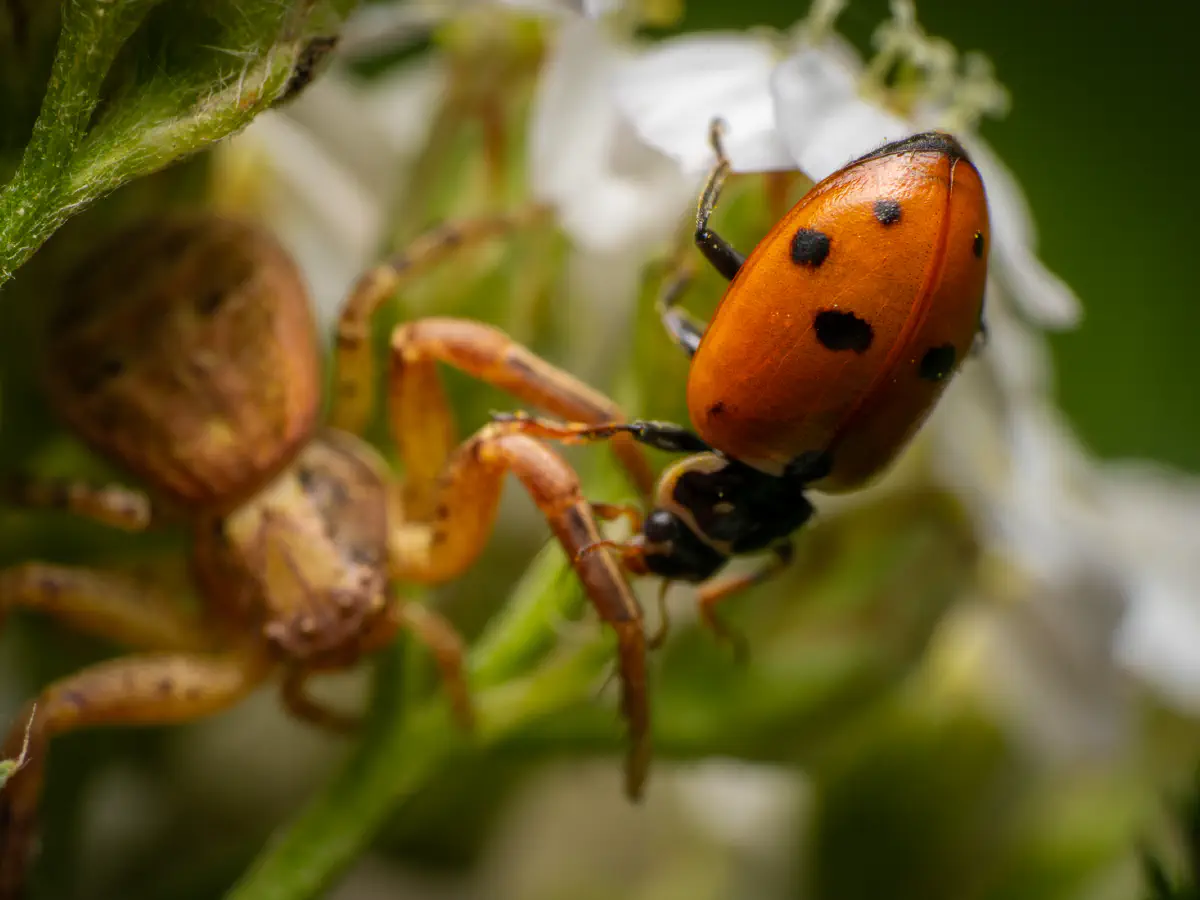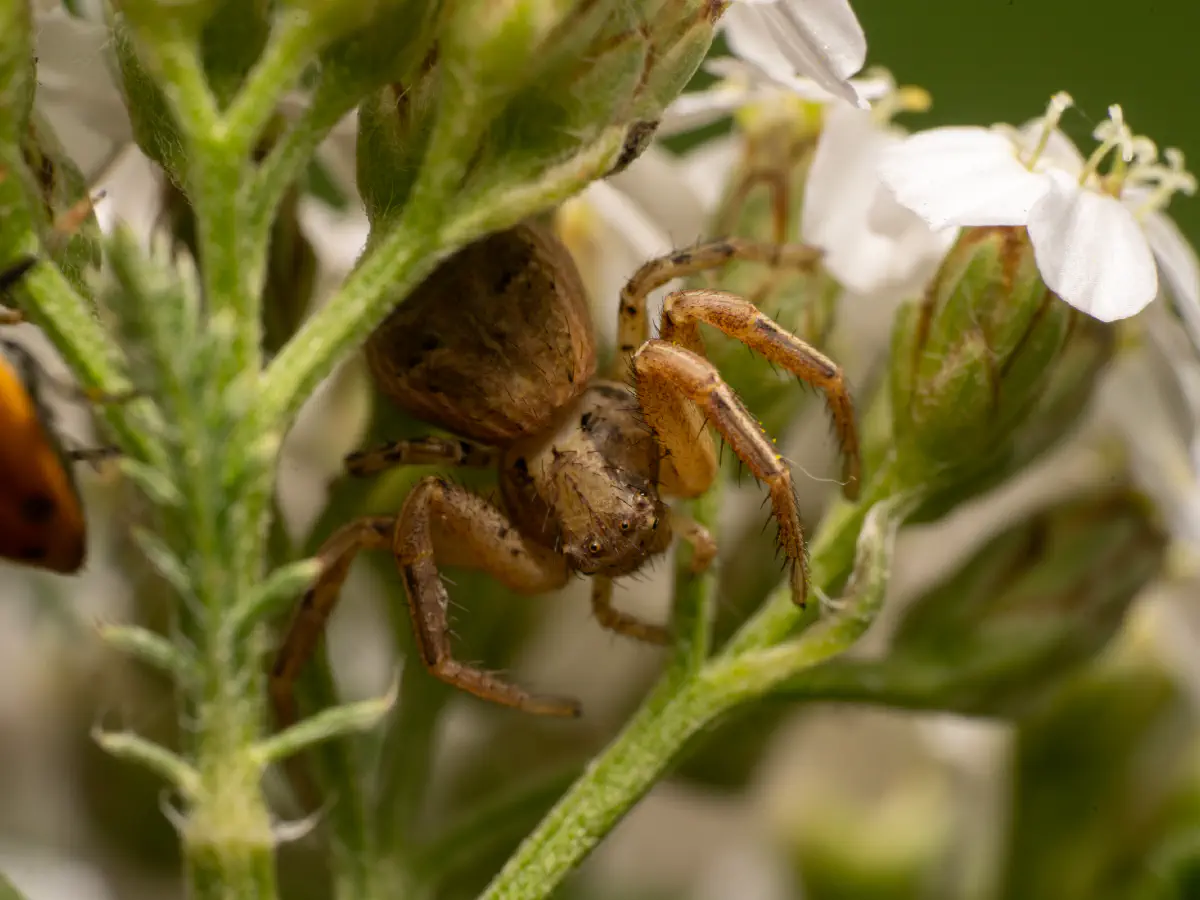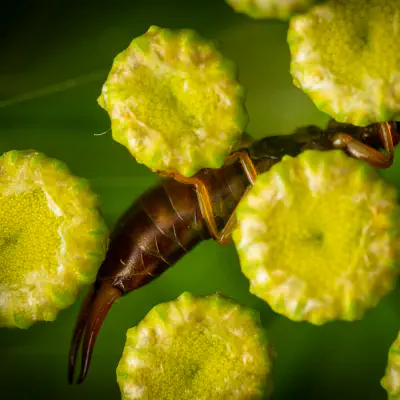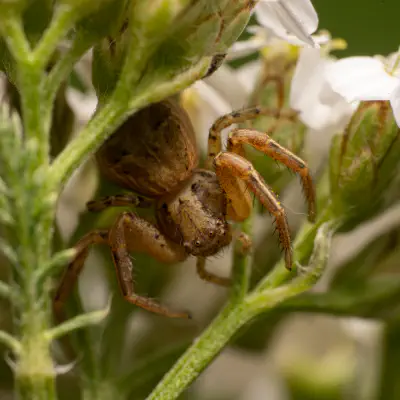The adults of Xysticus cristatus can reach a body length of about 6–8 mm (0.24–0.31 in) in the female, of about 3–5 mm (0.12–0.20 in) in the smaller male. The colour varies from light cream, dark brown to greyish. It is much darker in males, with contrasting designs. In both sexes the carapace shows a broad whitish median band containing a brown triangle facing the back and ending with a sharp, black apical
macula. The dorsum (upper surface) of the opisthosoma has a dark leaf pattern with white edges and light transverse stripes on the right and left. This cryptic colouration is used to blend in with its normal environment of dried leaves. The common name crab spider arises because they sometimes move in a crab-like way, from side to side.




